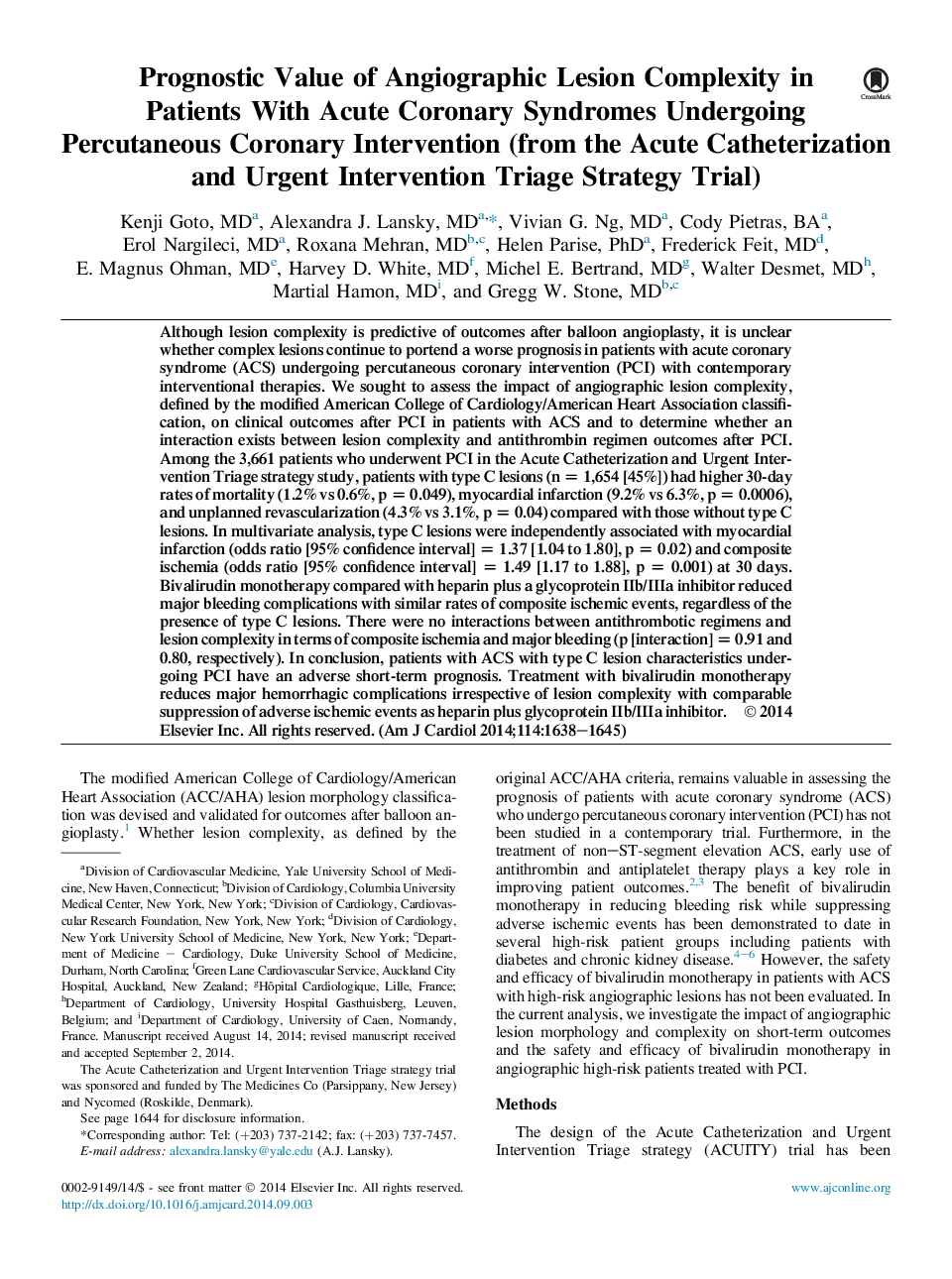| کد مقاله | کد نشریه | سال انتشار | مقاله انگلیسی | نسخه تمام متن |
|---|---|---|---|---|
| 2854236 | 1572153 | 2014 | 8 صفحه PDF | دانلود رایگان |
Although lesion complexity is predictive of outcomes after balloon angioplasty, it is unclear whether complex lesions continue to portend a worse prognosis in patients with acute coronary syndrome (ACS) undergoing percutaneous coronary intervention (PCI) with contemporary interventional therapies. We sought to assess the impact of angiographic lesion complexity, defined by the modified American College of Cardiology/American Heart Association classification, on clinical outcomes after PCI in patients with ACS and to determine whether an interaction exists between lesion complexity and antithrombin regimen outcomes after PCI. Among the 3,661 patients who underwent PCI in the Acute Catheterization and Urgent Intervention Triage strategy study, patients with type C lesions (n = 1,654 [45%]) had higher 30-day rates of mortality (1.2% vs 0.6%, p = 0.049), myocardial infarction (9.2% vs 6.3%, p = 0.0006), and unplanned revascularization (4.3% vs 3.1%, p = 0.04) compared with those without type C lesions. In multivariate analysis, type C lesions were independently associated with myocardial infarction (odds ratio [95% confidence interval] = 1.37 [1.04 to 1.80], p = 0.02) and composite ischemia (odds ratio [95% confidence interval] = 1.49 [1.17 to 1.88], p = 0.001) at 30 days. Bivalirudin monotherapy compared with heparin plus a glycoprotein IIb/IIIa inhibitor reduced major bleeding complications with similar rates of composite ischemic events, regardless of the presence of type C lesions. There were no interactions between antithrombotic regimens and lesion complexity in terms of composite ischemia and major bleeding (p [interaction] = 0.91 and 0.80, respectively). In conclusion, patients with ACS with type C lesion characteristics undergoing PCI have an adverse short-term prognosis. Treatment with bivalirudin monotherapy reduces major hemorrhagic complications irrespective of lesion complexity with comparable suppression of adverse ischemic events as heparin plus glycoprotein IIb/IIIa inhibitor.
Journal: The American Journal of Cardiology - Volume 114, Issue 11, 1 December 2014, Pages 1638–1645
